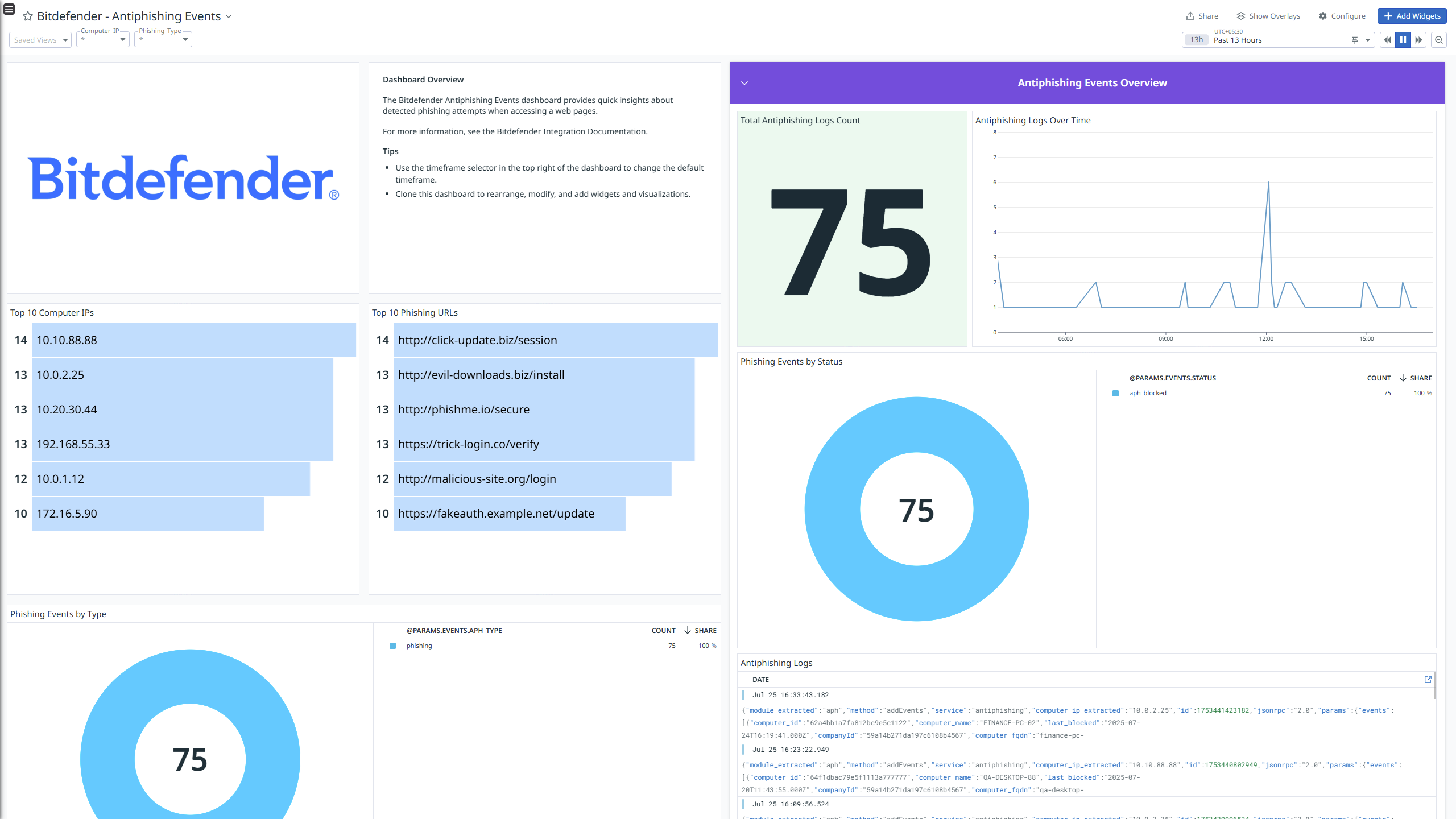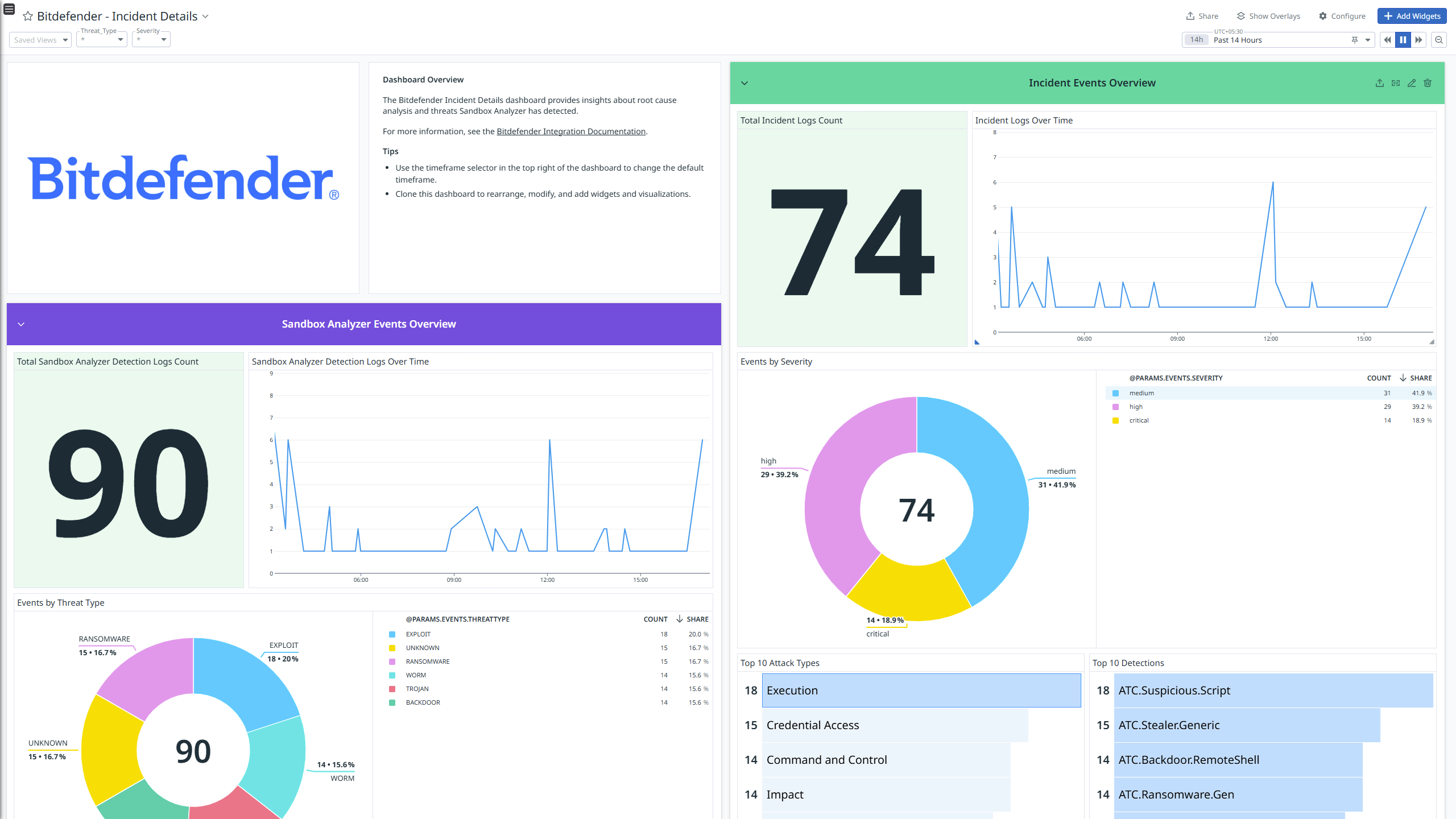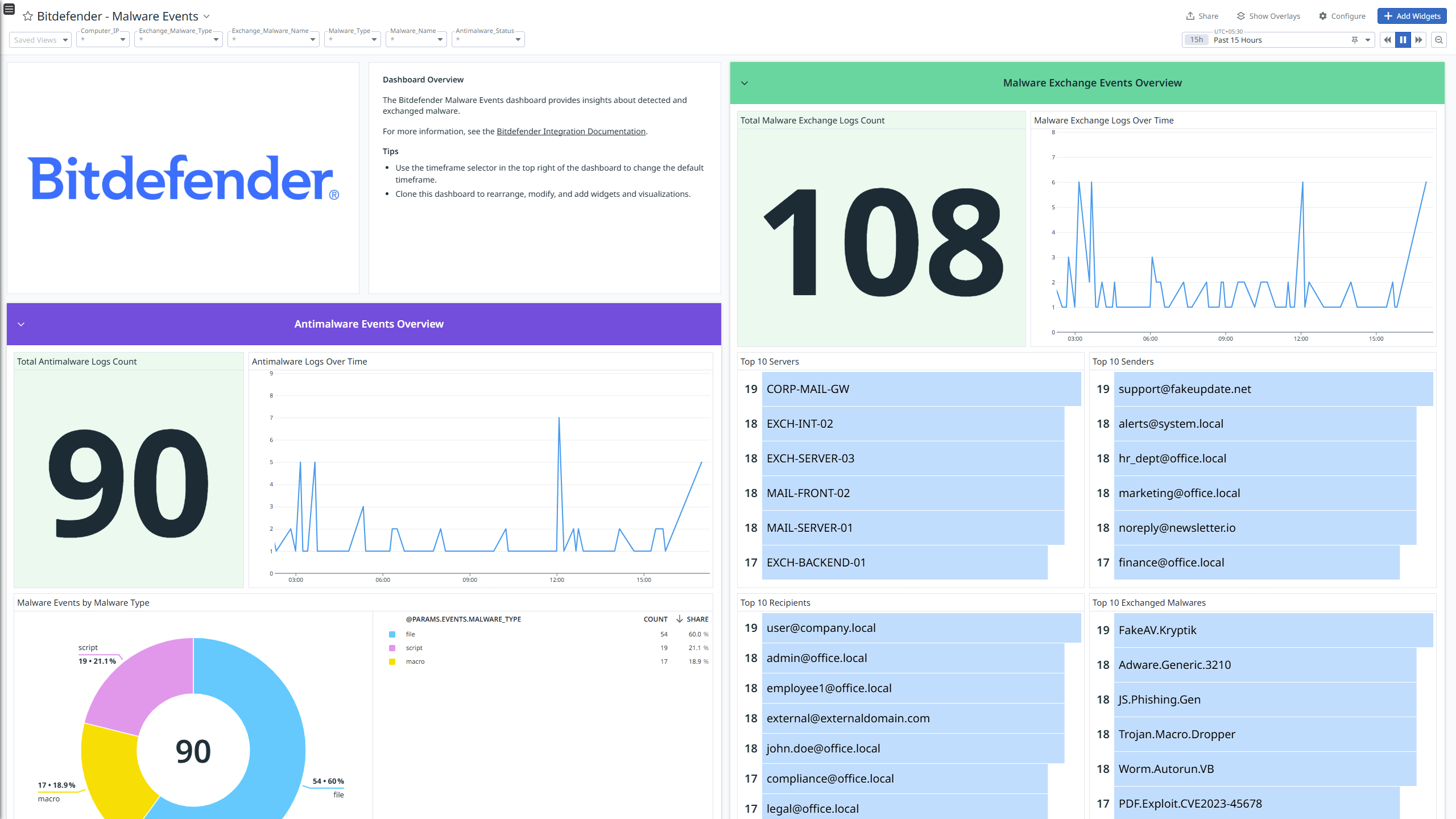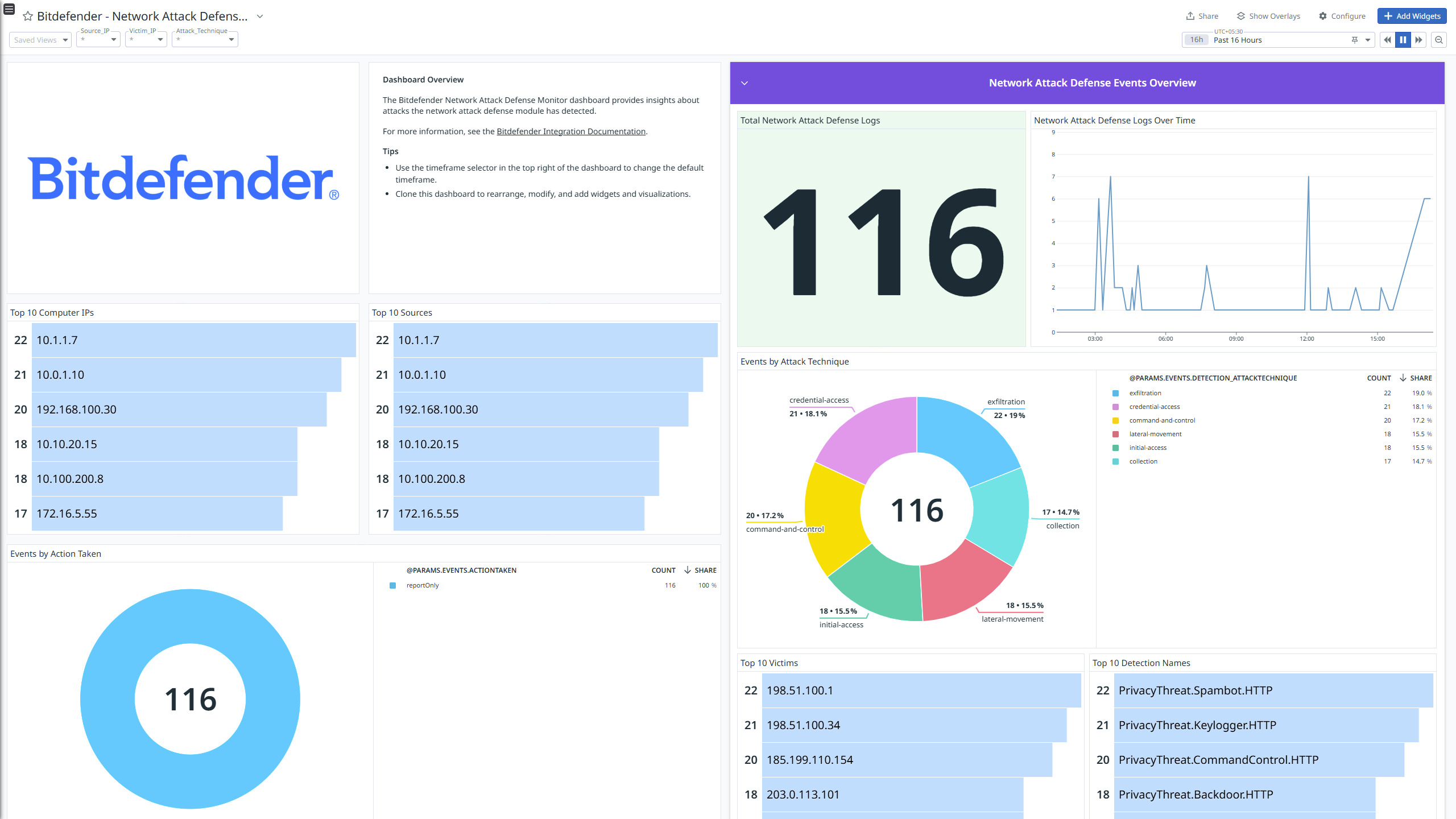- Esenciales
- Empezando
- Agent
- API
- Rastreo de APM
- Contenedores
- Dashboards
- Monitorización de bases de datos
- Datadog
- Sitio web de Datadog
- DevSecOps
- Gestión de incidencias
- Integraciones
- Internal Developer Portal
- Logs
- Monitores
- OpenTelemetry
- Generador de perfiles
- Session Replay
- Security
- Serverless para Lambda AWS
- Software Delivery
- Monitorización Synthetic
- Etiquetas (tags)
- Workflow Automation
- Centro de aprendizaje
- Compatibilidad
- Glosario
- Atributos estándar
- Guías
- Agent
- Arquitectura
- IoT
- Plataformas compatibles
- Recopilación de logs
- Configuración
- Automatización de flotas
- Solucionar problemas
- Detección de nombres de host en contenedores
- Modo de depuración
- Flare del Agent
- Estado del check del Agent
- Problemas de NTP
- Problemas de permisos
- Problemas de integraciones
- Problemas del sitio
- Problemas de Autodiscovery
- Problemas de contenedores de Windows
- Configuración del tiempo de ejecución del Agent
- Consumo elevado de memoria o CPU
- Guías
- Seguridad de datos
- Integraciones
- Desarrolladores
- Autorización
- DogStatsD
- Checks personalizados
- Integraciones
- Build an Integration with Datadog
- Crear una integración basada en el Agent
- Crear una integración API
- Crear un pipeline de logs
- Referencia de activos de integración
- Crear una oferta de mercado
- Crear un dashboard de integración
- Create a Monitor Template
- Crear una regla de detección Cloud SIEM
- Instalar la herramienta de desarrollo de integraciones del Agente
- Checks de servicio
- Complementos de IDE
- Comunidad
- Guías
- OpenTelemetry
- Administrator's Guide
- API
- Partners
- Aplicación móvil de Datadog
- DDSQL Reference
- CoScreen
- CoTerm
- Remote Configuration
- Cloudcraft
- En la aplicación
- Dashboards
- Notebooks
- Editor DDSQL
- Reference Tables
- Hojas
- Monitores y alertas
- Watchdog
- Métricas
- Bits AI
- Internal Developer Portal
- Error Tracking
- Explorador
- Estados de problemas
- Detección de regresión
- Suspected Causes
- Error Grouping
- Bits AI Dev Agent
- Monitores
- Issue Correlation
- Identificar confirmaciones sospechosas
- Auto Assign
- Issue Team Ownership
- Rastrear errores del navegador y móviles
- Rastrear errores de backend
- Manage Data Collection
- Solucionar problemas
- Guides
- Change Tracking
- Gestión de servicios
- Objetivos de nivel de servicio (SLOs)
- Gestión de incidentes
- De guardia
- Status Pages
- Gestión de eventos
- Gestión de casos
- Actions & Remediations
- Infraestructura
- Cloudcraft
- Catálogo de recursos
- Universal Service Monitoring
- Hosts
- Contenedores
- Processes
- Serverless
- Monitorización de red
- Cloud Cost
- Rendimiento de las aplicaciones
- APM
- Términos y conceptos de APM
- Instrumentación de aplicación
- Recopilación de métricas de APM
- Configuración de pipelines de trazas
- Correlacionar trazas (traces) y otros datos de telemetría
- Trace Explorer
- Recommendations
- Code Origin for Spans
- Observabilidad del servicio
- Endpoint Observability
- Instrumentación dinámica
- Live Debugger
- Error Tracking
- Seguridad de los datos
- Guías
- Solucionar problemas
- Límites de tasa del Agent
- Métricas de APM del Agent
- Uso de recursos del Agent
- Logs correlacionados
- Stacks tecnológicos de llamada en profundidad PHP 5
- Herramienta de diagnóstico de .NET
- Cuantificación de APM
- Go Compile-Time Instrumentation
- Logs de inicio del rastreador
- Logs de depuración del rastreador
- Errores de conexión
- Continuous Profiler
- Database Monitoring
- Gastos generales de integración del Agent
- Arquitecturas de configuración
- Configuración de Postgres
- Configuración de MySQL
- Configuración de SQL Server
- Configuración de Oracle
- Configuración de MongoDB
- Setting Up Amazon DocumentDB
- Conexión de DBM y trazas
- Datos recopilados
- Explorar hosts de bases de datos
- Explorar métricas de consultas
- Explorar ejemplos de consulta
- Exploring Database Schemas
- Exploring Recommendations
- Solucionar problemas
- Guías
- Data Streams Monitoring
- Data Jobs Monitoring
- Data Observability
- Experiencia digital
- Real User Monitoring
- Pruebas y monitorización de Synthetics
- Continuous Testing
- Análisis de productos
- Entrega de software
- CI Visibility
- CD Visibility
- Deployment Gates
- Test Visibility
- Configuración
- Network Settings
- Tests en contenedores
- Repositories
- Explorador
- Monitores
- Test Health
- Flaky Test Management
- Working with Flaky Tests
- Test Impact Analysis
- Flujos de trabajo de desarrolladores
- Cobertura de código
- Instrumentar tests de navegador con RUM
- Instrumentar tests de Swift con RUM
- Correlacionar logs y tests
- Guías
- Solucionar problemas
- Code Coverage
- Quality Gates
- Métricas de DORA
- Feature Flags
- Seguridad
- Información general de seguridad
- Cloud SIEM
- Code Security
- Cloud Security Management
- Application Security Management
- Workload Protection
- Sensitive Data Scanner
- Observabilidad de la IA
- Log Management
- Observability Pipelines
- Gestión de logs
- CloudPrem
- Administración
- Gestión de cuentas
- Seguridad de los datos
- Ayuda
Bitdefender
Supported OS
Versión de la integración1.0.0








Bitdefender - Advanced Threat Control Events
Bitdefender - Antiphishing Events
Bitdefender - Hyper Detect Events
Bitdefender - Incident Details
Bitdefender - Malware Events
Bitdefender - Network Attack Defense Event Details
Bitdefender - Overview
Bitdefender - User Control Event Details
Esta página aún no está disponible en español. Estamos trabajando en su traducción.
Si tienes alguna pregunta o comentario sobre nuestro actual proyecto de traducción, no dudes en ponerte en contacto con nosotros.
Si tienes alguna pregunta o comentario sobre nuestro actual proyecto de traducción, no dudes en ponerte en contacto con nosotros.
Overview
Bitdefender provides cybersecurity solutions with leading security efficacy, performance, and ease of use to small and medium businesses, mid-market enterprises, and consumers. Bitdefender EDR effectively stops ransomware and breaches with automated cross-endpoint correlation and seamlessly integrated prevention, protection, detection, and response.
The Bitdefender integration uses a webhook to ingest Bitdefender EDR logs. The integration provides OOTB dashboards and detection rules for the following event types:
| Event | Trigger |
|---|---|
| Antiphishing | Endpoint agent detects a known phishing attempt when accessing a web page |
| Antimalware | Bitdefender detects malware on an endpoint in your network |
| Advanced Threat Control (ATC) | Potentially dangerous application is detected and blocked on an endpoint |
| Data Protection | Data traffic is blocked on an endpoint, according to data protection rules |
| Exchange Malware Detection | Bitdefender detects malware on an Exchange server in your network |
| Firewall | Endpoint agent blocks a port scan or an application from accessing the network, according to the applied policy |
| Hyper Detect event | Hyper Detect module detects malware |
| Sandbox Analyzer Detection | Sandbox Analyzer detects a new threat among the submitted files |
| Antiexploit Event | Advanced Anti-Exploit triggers a detection |
| Network Attack Defense Event | Network Attack Defense module triggers a detection |
| User Control/Content Control | User activity, such as web browsing of software application, is blocked on the endpoint according to the applied policy |
| Ransomware activity detection | Endpoint agent blocks ransomware attack |
| New Incident | New Root Cause Analysis (RCA) is displayed under the Incidents section of Control Center. The event contains a list of relevant items extracted from the RCA JSON |
Setup
Retrieve the Datadog Webhook URL
- In Datadog, navigate to the Integrations tab, and search for the Bitdefender integration.
- Click the Bitdefender integration. The integration window opens. On the Configure tab, select an existing API key, or create a new one.
- After selecting an API key, click Add API key, then Click Here to Copy URL.
Configure a webhook in Bitdefender
Log in to Bitdefender Business Security Enterprise Portal using an administrator account. Your account must have the following rights:
- Manage Networks
- Manage Users
- Manage Company
- View and analyze data
Click the User menu, then click My Account.
Navigate to the Control Center API section and copy the Access URL.
Navigate to the API keys section.
Click Add. The API Key Configuration window opens.
Provide the following information:
- API Key Description: A relevant name for your API key
- Enabled APIs: Select Event Push Service.
Click Generate and copy the generated API key.
Perform Base64 encoding on the generated API key. You need to use the encoded API key for webhook configuration.
- Take your API key and append a colon (:) to it, like this:
<api_key>: - Encode the resulting string using a Base64 encoder.
For example, if your API key is abc123, the string to encode is
abc123:After Base64 encoding, the result will be something likeYWJjMTIzOg==.- Take your API key and append a colon (:) to it, like this:
Make a curl request. Use the template below, putting values into the following fields:
- <control_center_apis_access_url>: The URL you copied in step 3
- <bitdefender-encoded-api-key>: Your encoded API key from step 8
- <dd-api-key>: Your Datadog API key
- <webhook_url>: The URL you copied in previous section
Retrieve the Datadog Webhook URL- Note: If you’re using Windows, add
^before&ddsourceand&servicein the webhook_url parameter.
- Note: If you’re using Windows, add
- <event-type>: The event type for which logs need to be pushed to Datadog, e.g.
avfor Antimalware- Supported event types:
aph(Antiphishing),av(Antimalware),avc(Advanced Threat Control),dp(Data Protection),exchange-malware(Exchange Malware Detection),fw(Firewall),hd(Hyper Detect event),network-sandboxing(Sandbox Analyzer Detection),antiexploit,network-monitor(Network Attack Defense Event),uc(User Control/Content Control),ransomware-mitigation(Ransomware activity detection),new-incident
- Supported event types:
curl -X POST -k "<control_center_apis_access_url>/v1.0/jsonrpc/push" --header "Authorization: Basic <bitdefender-encoded-api-key>" --header "Content-Type: application/json" --data "{\"params\": {\"status\": 1,\"serviceType\": \"jsonRPC\",\"serviceSettings\": {\"url\": \"<webhook_url>\",\"requireValidSslCertificate\": false,\"authorization\": \"<dd-api-key>\"},\"subscribeToEventTypes\": {\"<event-type>\": true}},\"jsonrpc\": \"2.0\",\"method\": \"setPushEventSettings\",\"id\": 1}"Repeat steps 5-9 for each supported event type you want to push to Datadog.
Data Collected
Logs
The Bitdefender integration collects and forwards Bitdefender logs to Datadog.
Metrics
The Bitdefender integration does not include any metrics.
Events
The Bitdefender integration does not include any events.
Support
For further assistance, contact Datadog Support.
